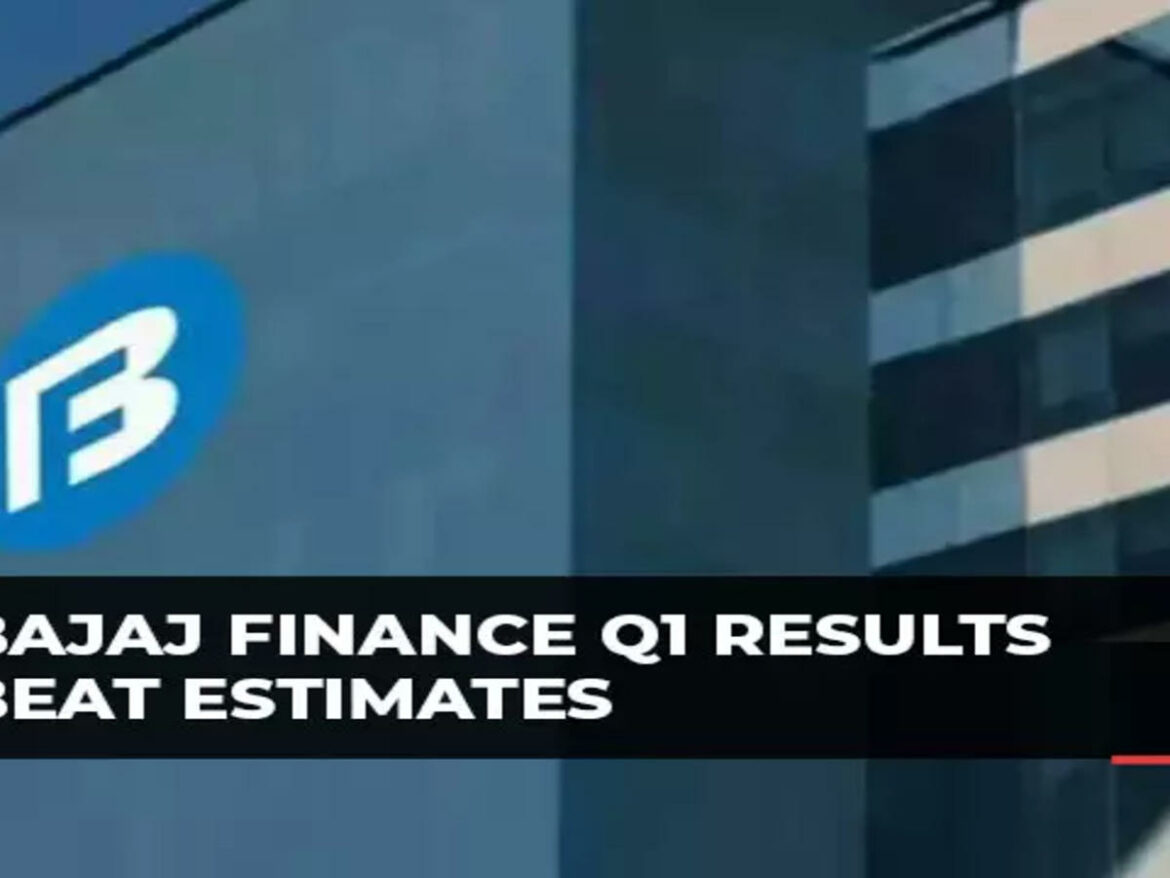
Bajaj Finance 1QFY24 Results: An In-Depth Analysis
The dynamism of Equity Markets beckons for comprehensive insights. Enter Bajaj Finance, a key player whose performance can offer a valuable understanding of market movements. In this post, we will dissect the performance of Bajaj Finance for 1QFY24.
Overview of Bajaj Finance 1QFY24 Results
Results for 1QFY24 illustrate a robust fiscal quarter for Bajaj Finance. This period registered a reported Profit After Tax (PAT) growth of 32% Year-over-Year (YoY) to INR34.4 billion. Noteworthy drivers include increased customer additions, asset quality improvements, and a YoY moderation in cost-income ratios.
Breakdown of Net Interest Income
Net Interest Income (NII), the difference between the revenue generated from a bank's assets and the expenses associated with paying its liabilities, forms a critical part of Bajaj Finance's revenue stream. For 1QFY24, NII rose 27% YoY to approximately INR67.2 billion. Further, other operating income experienced a 23% YoY rise, and Net Total Income (NTI) saw a jump of 27% YoY to about INR84 billion.
Understanding NIM Compression
Net Interest Margin (NIM), a critical financial institution's health metric, underwent compression in this period. Despite reported NII showing a marginal decline of ~10bp Quarter-over-Quarter (QoQ), the NIM remained steady at ~13% in 1QFY24. However, analysts project a NIM compression of ~25bp in FY24E. This compression originates from the anticipated increase in the cost of borrowings and the challenge of passing interest rate hikes to customers.
Projection of AUM/PAT CAGR for FY23-FY25
Market Estimations for Assets under Management (AUM)/PAT indicate a Compound Annual Growth Rate (CAGR) of ~29%/26% over FY23-FY25. The market anticipates Bajaj Finance will deliver a Return on Assets (ROA)/Return on Equity (RoE) of 4.6%/25% in FY25.
What to Monitor in FY24?
Several factors will demand close attention in FY24. Topmost on this list lies the evolution of Bajaj Finance's payments landscape and the adoption of its payment offerings. Equally essential is the degree to which NIM compression can be offset with operating leverage, which could lead to a decline in cost ratios.
Analyzing AUM Growth and Customer Acquisition
A key growth indicator, AUM, witnessed a rise of 32% YoY and ~9% QoQ to INR2.7 trillion in this period. Bajaj Finance reported that Auto Finance, Urban B2B, and Commercial sectors (excluding Loan Against Securities) primarily drove this sequential AUM growth.
Customer acquisition, too revealed a promising trend. The customer franchise rose 21% YoY to ~73 million, with new loans booked growing 34% YoY to 9.9 million, marking a historic quarterly peak in customer acquisitions. The company remains confident of adding 12-13 million new customers in FY24E.
How Operating Leverage Contributes to Performance
Operating leverage emerged as a pivotal factor in Bajaj Finance's performance. The company's operating expenses grew 20% YoY to INR28.5 billion, with the opex-to-NII ratio remaining steady QoQ at ~34% in 1QFY24. Bajaj Finance's investment in digital technology continues, with expectations of witnessing operating leverage in forthcoming quarters. This leverage, driven by economies of scale and relatively lower technology investments, will likely steer the moderation in the opex-to-NII ratio to ~34%/33% in FY24/FY25.
Deciphering Elevated Credit Costs
The quarter witnessed elevated credit costs at ~170bp (Previous Quarter: ~155bp). This included INR1.2 billion released from the management overlay. Three components constituted total credit costs for the quarter: standard Expected Credit Loss (ECL) provisioning on additional assets created, one-time provisions on the Manipur portfolio, and an overlay towards the redevelopment of the ECL model. Management has guided FY24 credit costs at 155-165bp.
Asset Quality Continues to Improve
While credit costs rose, Bajaj Finance also delivered improvements in asset quality. Gross Stage 3 (GS3) improved ~10bp QoQ to ~0.87%, while Net Stage 3 (NS3) remained stable at ~0.3%. The Stage 3 Provision Coverage Ratio (PCR) rose ~1pp to ~65% during the quarter.
The Q1FY24 results show Bajaj Finance in a strong position, highlighting robust growth trends, strategic investments, and quality asset management. As we navigate FY24, understanding these elements will be vital in interpreting the evolving landscape of Equity Markets.
Follow Quantace Research
-------------
Why Should I Do Alpha Investing with Quantace Tiny Titans?
1) Since Apr 2021, Our premier basket product has delivered +48% Absolute Returns vs the Smallcap Benchmark Index return of +12.8%. So, we added a 34% Alpha.
2) Our Sharpe Ratio is at 1.4.
3) Our Annualised Risk is 20.1% vs Benchmark's 20.4%. So, a Better ROI at less risk.
4) It has generated Alpha in the challenging market phase.
5) It has a good consistency and costs 6000 INR for 6 Months.
-------------
Disclaimer: Investments in securities market are subject to market risks. Read all the related documents carefully before investing. Registration granted by SEBI and certification from NISM in no way guarantee performance of the intermediary or provide any assurance of returns to investors.
-------------
#future #machinelearning #research #investments #markets #investing #like #investment #assurance #management #finance #trading #riskmanagement #success #development #strategy #illustration #assurance #strategy #mathematics #algorithms #machinelearning #ai #algotrading #data #financialmarkets #quantitativeanalysis #money






